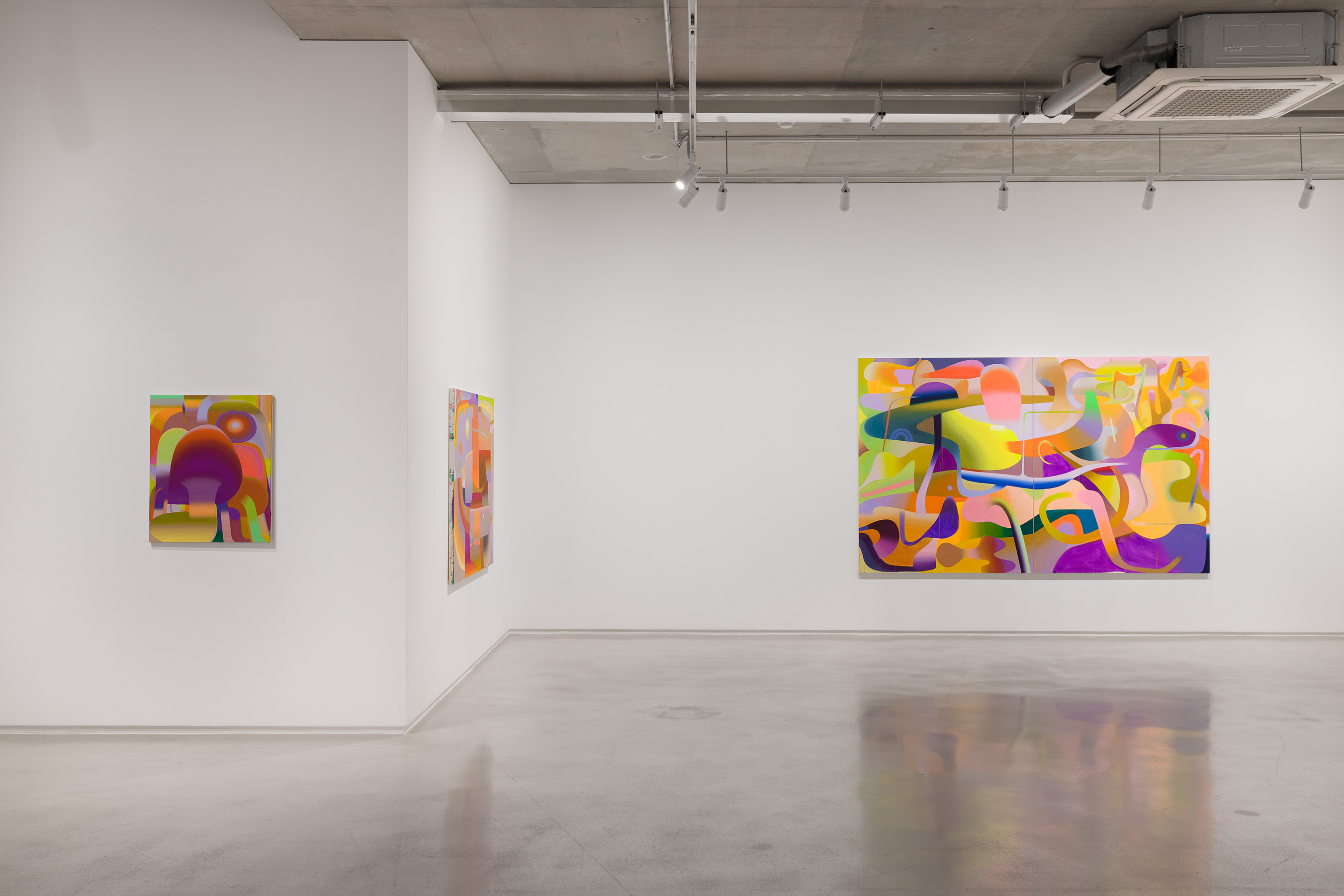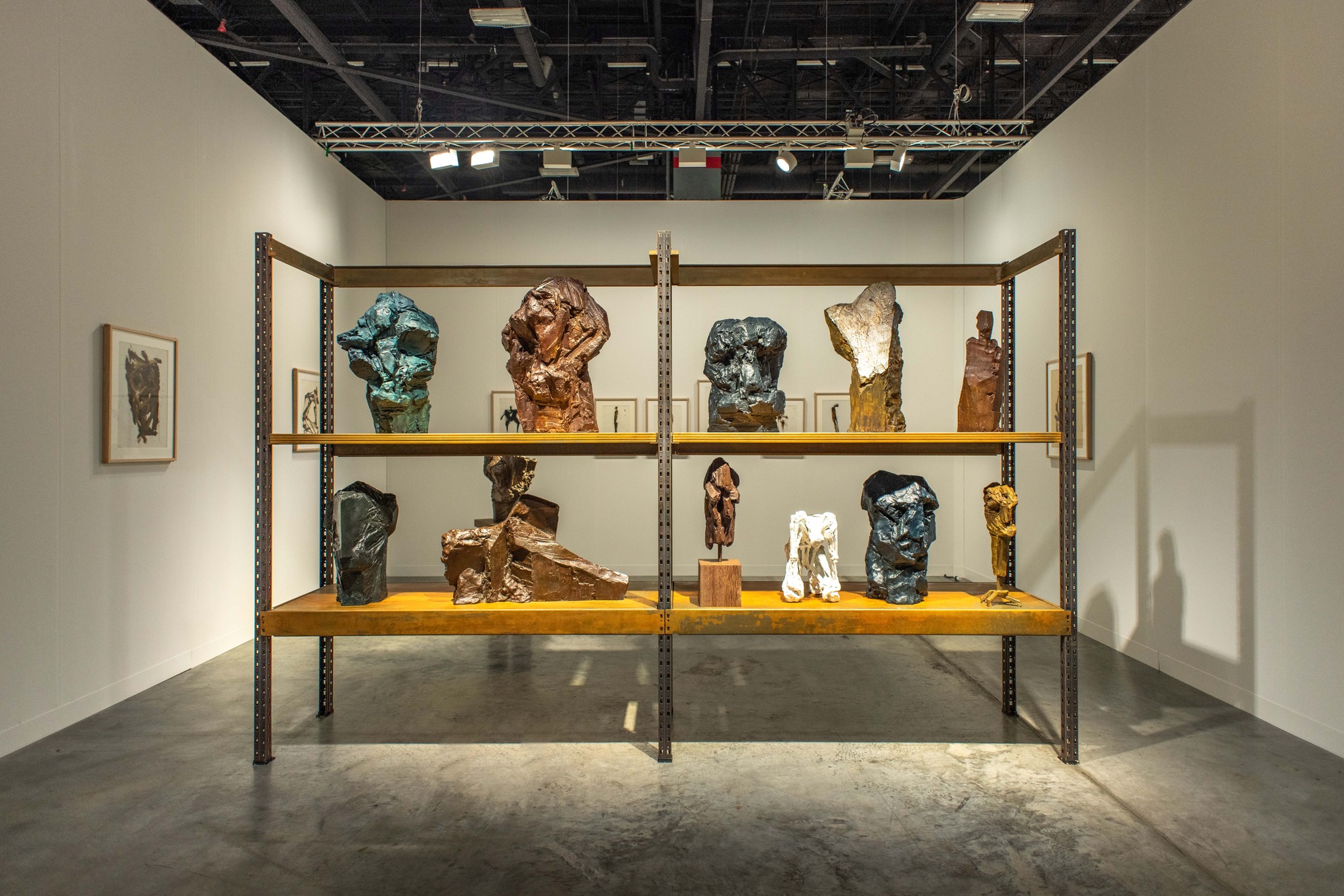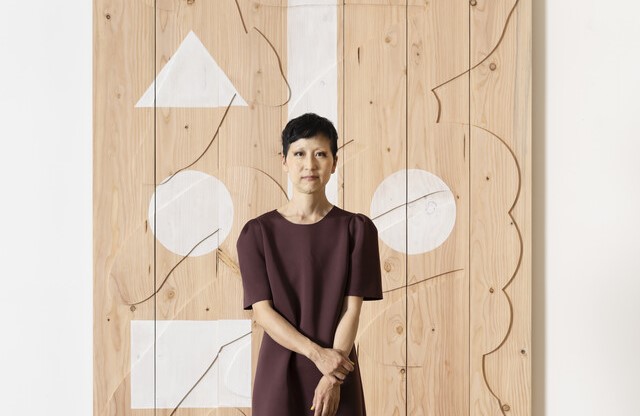Sejin Park
(b. 1977) has been capturing ordinary landscapes around us with a keen
perspective. Her landscape paintings go beyond the physical surfaces of the
visible world, reflecting deeper layers. Starting from looking within herself
through past experiences and memories, the artist expresses the hidden sides of
various landscapes that are easily overlooked or cannot be seen with the naked
eye.

Sejin Park, Landscape 1993-2002, 2002 ©DOOSAN Art Center
This
style of Sejin Park's landscape painting began in earnest in the early 2000s,
with her first works rooted in an old memory of Panmunjom. Her piece Landscape
1993-2002 (2002), exhibited at the Korean Pavilion in the 2005 Venice
Biennale, is set against the backdrop of Panmunjom, which she visited on a
field trip in 1993.
From
the southern guard post of the Joint Security Area, the artist gazed toward the
"Bridge of No Return," imagining unseen landscapes that might exist
on the unreachable other side. Revisiting these memories, she created the work,
where faint silhouettes facing in different directions appear—suggesting North
Korean soldiers, South Korean military police, or even a projection of herself.

Sejin Park, Crying Solider, 2007 ©Arario Gallery
In
this way, the landscapes Sejin Park presents extend from her immediate
surroundings—including herself—to distant, faintly perceptible spaces. The
boundaries between elements within her paintings are barely discernible, sensed
only through thin layers and diffuse light, creating a “landscape” that also
exists as a “background” where objects collide and blend.
Through
delicate brushstrokes and a textured matière technique, the artist conveys this
“landscape as boundary” as a background that reveals the organic movements and
encounters of presence and space.
 Installation
view of “le manteau” (Project Space Sarubia, 2006) ©Project Space Sarubia
Installation
view of “le manteau” (Project Space Sarubia, 2006) ©Project Space SarubiaFor
instance, in her 2005 work Night, rather than focusing on
the outlines of forms, the texture of her brushstrokes stands out. This piece
is part of her le manteau series, created from 2000 to 2007,
and as the series progresses, the boundaries of forms other than the manteau
itself become increasingly transparent or blurred, blending nearly
indistinguishably with the background color.
Meanwhile,
within the composition, the manteau’s patterns become more ornate, and its
shadow lengthens. Here, the manteau serves a dual function: it divides and
conceals the spaces on either side, while also acting as a bridge that connects
and opens these spaces.

Sejin Park, Night, 2005 ©DOOSAN Art Center
Night,
a piece from the latter part of the series, explores our sensory
experience within the darkness of night. According to the artist, night has no
inherent color but is an interpretation of boundaries chosen by the viewer.
The
dual sensations of comfort and fear that darkness evokes, along with the
indistinct hues of night, are expressed through multiple layers of brushstrokes
and paint built up on the canvas. This textured surface allows Night
to reveal varied impressions of night, changing subtly with different lighting
conditions.

Sejin Park, Old Morning 2007 ©DOOSAN Art Center
The
dreamlike atmosphere created by overlapping and connecting foregrounds and
backgrounds, along with faint forms within these landscapes, emerges from a
persistent observation of real landscapes as if painting Real scenery
landscape depictions. Even in seemingly abstract works like Old
Morning (2007), the artist captures the autumn morning landscape of
Korea, observed firsthand over an extended period.
To
convey the landscape as it appears in reality, she meticulously observes the
objects and nature before her. During this process, she undergoes a
transformation, merging with every element within the landscape she intends to
depict.

Installation view of “Golden Age” (Arario Gallery, 2007-2008) ©Arario Gallery
Sejin Park’s solo exhibition “Golden Age”
at Arario Gallery in 2007 encapsulated her artistic vision. The exhibition
title, “Golden Age,” reflects a world within her work where the existence of
every entity is stable, and distinctions between "this" and
"that" dissolve, creating a realm of interconnectedness on the
canvas.
During the year and a half of preparation
for the exhibition, the artist painted for more than 10 hours every day,
creating a new world on canvas where all objects are connected and life is
inherent in continuity, beyond the boundaries of physical space and time.

Sejin Park, Run and Run Again! 2012 ©DOOSAN Art Center
Sejin
Park has also explored various techniques to build her unique world on the
canvas. For instance, to better express backgrounds that connect with vague
memories or unseen elements, she sometimes opted for paper that absorbs paint
rather than canvas that accumulates it.
Additionally,
she used materials found in nature, such as cherries or roses. For example, Run
and Run Again! (2012) is a landscape painted on paper using cherry
juice mixed with acrylic glue.

Sejin Park, how to concrete 2018 ©nook gallery
In 2018, the artist lived in a place where a hilltop wall met the mountains, and she began painting the worn concrete retaining walls she encountered on her daily walks, along with the ordinary landscapes of the hilltop. As she passed through the narrow paths, she found traces of interconnected beings reflecting each other in the seemingly mundane scenes.

Sejin Park, Four trees 2018 ©nook gallery
Sejin
Park states that every cement wall reflects the life on the opposite side,
supporting and facing each other. The stains created by rainwater, mold, and
dirt mixed with the light and wind from the opposite life form another
landscape. The traces of countless beings, including the artist herself, who
have passed through that path, appear in her works as distant landscapes, where
stains, shadows, and light are interconnected.

Sejin Park, Frost_Urticaceae 2012 ©DOOSAN Art Center
In
other words, Sejin Park’s landscapes are the stories of the beings that live
and exist within them, as well as the way she engages with the world and perceives
herself. She reveals the traces of lives left behind by unnamed beings that
exist behind the visible world within her landscapes. These traces are shown
either directly or subtly, leaving behind only small clues that demonstrate how
our lives are continuously connected with others, beyond the canvas.
"Life is the continuity of living, and through it, time is confirmed. Even in places where time seems to have stopped, the absence of time still leaves traces, and I discovered those traces later." (Sejin Park, Artist’s Note)

박세진 작가 ©매거진한경
Sejin
Park has received her B.F.A. and M.F.A. in Painting from Ewha Womans University
in Seoul, Korea. She has had solo exhibitions at nook gallery (2018, Soeul),
DOOSAN Gallery (2012, New York, USA), Arario Gallery (2007, Cheonan, Korea),
and Project Space Sarubia (2006, Seoul).
Her
Works has also been included in group exhibitions at Castello di Rivoli Museum
of Contemporary Art (2005, Torino, Italy), The Korean Pavilion The 51st Venice
Biennale (2005, Venice, Italy), Samsung Museum of Modern Art (2003, Seoul,
Korea), East Link Gallery (2003, Shanghai, China), Netherlands Media Art
Institute (2003, Amsterdam, Netherland), Alternative space Pool (2000, Seoul)
and Seoul Art center (1999, Seoul).
References
- 한국경제매거진, [ARTIST] 실경산수의 경계를 넘나들다
- Google Arts & Culture, 리얼디엠지프로젝트, 박세진, 풍경 1993-2002 (Google Arts & Culture, REAL DMZ PROJECT, Sejin Park, Landscape 1993-2002)
- 두산아트센터, 원경 (DOOSAN Art Center, Won-Kyung)
- 스페이스 이수(Space ISU), 밤의 풍경
- 프로젝트 스페이스 사루비아, 망토 (Project Space Sarubia, le manteau)
- 아라리오 갤러리, Golden Age (Arario Gallery, Golden Age)
- 누크 갤러리, 풍경의 빗면 (nook gallery, Aslope)
















